As part of Apple’s annual Worldwide Developer Conference (WWDC), held each June – though this year totally virtual, the company has outlined numerous aspects of their platforms (iOS, iPad OS, watchOS, and tvOS). However, for this post I’m going to purely focus on the wearables side of the house.
Now while today’s event outlined new software, they didn’t announce any new Apple Watch hardware. But that’s normal. Historically that comes instead in September (usually). Whether or not that happens this year of course remains to be seen, but Apple has largely shifted to a yearly refresh cycle for their Apple Watch series. Last year they launched the Apple Watch Series 5.
But WWDC is all about developers, and specifically about how those developers will use Apple’s various platforms. It’s similar to Garmin’s Connect IQ conference, or Microsoft’s Build conference. Sure, sometimes new hardware comes out. But it’s more about software capabilities. And more importantly sometimes you see hints at what’s coming hardware-wise via the software features that are discussed but not yet possible to take advantage of.
Note that Apple states that watchOS 7 will *only* be available to Apple Watch Series 3 and higher. So as of today that means Apple Watch Series 3 (Sept 2017), Series 4 (Sept 2018), and Series 5 (Sept 2019) units. Original Apple Watch (2015), Series 1 (2016), and Series 2 (2016) units are outta luck here.
With that, let’s dive into the details.
(Note: You can watch the full developer conference keynote presentation here, the watchOS pieces start around the 47-minute marker)
What’s coming:
As usual, Apple started the presentation with big numbers, specifically that there are now 20,000 watchOS apps in the app store today. That’s no surprise, but one has to keep in mind that many of these apps are more minor additives to existing iOS apps. There are many incredible apps that offer specific and unique features on the watch, but there’s countless more that simply usher slightly different notifications. Wearable apps are hard, and app developers across all platforms, from Garmin to Samsung to WearOS (Google) struggle with finding balance between usefulness and simply duplicating notifications.
Apple did note at *both* the start and the finish of the roughly 9 minute long Apple Watch section that this was only a slice of the total watch-focused updates they’ll be sharing “this year”.
Now we’re going to work backwards in the new features from how Apple presented them, with instead starting with the most important: Sleep tracking.
Up until now, no Apple Watch could natively track sleep. Sure, 3rd party apps could (and some were quite good), but it wasn’t a native Apple Watch experience. And ultimately when you’re talking tens of millions of users, that matters.
The first part of the sleep ‘suite’ is a new bedtime routine and platform function called ‘Wind Down’. This aims to minimize distractions by displaying a wind-down screen on your phone, it also includes shortcuts for certain things like playing music.
As you hit bedtime your phone dims the screen and turns on do not disturb mode:
And your watch will go into sleep mode. This will turn off the screen, but it can be tapped to see the time and scheduled alarm.
When it’s time to wake up, you’ll get a silent wake-up alarm or audible one:
You’ll first see a wake-up screen with battery life of the watch:
You’ll also see the time asleep, and the trending direction over the last 14 days.
Meanwhile, on iOS on your phone, you’ll see more detailed sleep tracking information. This info is stored in Apple Health (just as other sleep tracking from other devices was):
You’ll also be able to customize sleep schedules down below, and again see the trending stats:
Finally on sleep, Apple says they’re using machine learning here to determine your exact sleep times. They didn’t specify what other metrics they might be capturing in the background, or the detail of that. My guess is we’ll see specific WWDC sessions on aspects of this later this week.
Note that Apple has also added additional Mobility Metrics in the Health app: Low-range cardio fitness, walking speed, stair-descent speed, stair-ascent speed, six-minute walk distance, double support time, step length, and asymmetry.
Next, Apple has made some pretty big expansions with watch faces and so-called complications (the bits of data on your watch face). To begin, they’ve added more complications to more watch faces, and are now allowing apps to have multiple complications per watch face. They gave an example of a customizable Nike Run Club watch face that can be customized in multiple spots specifically from that app.
However, the far bigger news here is that watch faces can now be shared via either 3rd parties (like apps or sites), but also between friends/family directly in the same way you’d message someone. This new feature is called ‘Face Sharing’.
They used an example of a cycling site that created a shareable watch face:
However, that watch face depends on the Bikemap app to get the complication data within the watch face. You can see below exactly which component requires that app. So iOS will prompt you to get that app as part of the watch face sharing routine:
You can also share watch faces via social media or directly:
However, what appears to be missing in this entire thing is actually being able to *create* your own watch face (either as a developer or a user). Every example Apple gave was merely the *customization* of watch faces, and sharing thereof. Thus, unless there’s something they didn’t hint at or include on screen, this isn’t quite as big a deal as Apple might make it out to be. After all, virtually all other wearable platforms include the ability for developers to create watch faces.
Next, there’s cycling directions on the wrist via Apple Maps. This is also timed with iOS14 getting cycling directions in Apple Maps. watchOS will now give you cycling directions on the wrist between two points.
This includes showing details such as bike lanes, elevation graphs/preference, and turn by turn directions. It’ll even show dismount/etc details for stairs.
However, this seems highly limited right now to only a handful of major cities in the US and China. Roughly 7 in total were shown earlier in the iOS 14 section. So I wouldn’t really consider this a major feature for most people out there.
Next, Apple noted that they added a few new workout types to watchOS 7, specifically: Dance, Core Training, Functional Strength Training, Cooldown. However, these types are already in watchOS6, so it’s a bit unclear what they were trying to say here…but didn’t land correctly.
And over on iOS 14, the ‘Activity’ app has been renamed to ‘Fitness’, which frankly makes a ton of sense. And as part of that they’ve redesigned the Activity Fitness app, which creates a much more clear dashboard of your fitness details on a single page:
Finally, Apple has added a new hand-washing detection algorithm. This will use both motion tracking as well as the microphone to hear the sound of running water:
It’ll then start giving you a 20-second countdown. If you prematurely end your hand-washing routine, it’ll “gently” remind you to do better.
And there ya go, a complete round-up of watchOS 7 features.
And again, they ended the Apple Watch section saying that they were showing you just “some of what’s coming this year in watchOS 7”. Whether or not we get more details of that later in the week via specific developer sessions, or later in the year as part of additional product launches remains to be seen.
Wrap-Up:
While at first glance sleep tracking is a big deal, I don’t think the aim here is really about current Apple Watch users. It’s about future ones, namely from September 2020 onwards. Having sleep tracking in today’s Apple Watch isn’t going to be an awesome solution. Functional, yes…but awesome, no. That’s because of the simple fact that an Apple Watch Series 5 unit will only get about 24 hours of battery life (sometimes less, sometimes more, but that’s the ballpark). As such, people will still need to charge it daily, so that means now shifting that charging timeframe from overnight to some other point in the day. Perhaps sitting at the office (home or otherwise), or while you eat breakfast.
Either way, it’s still gonna have to happen.
But realistically I doubt Apple would roll out this feature without better hardware to support it. And by ‘better’, I’m specifically talking battery life – I’d think they’d ideally want to get to 2-3 days sustained use between charges in order to make this feature make sense for most people.
Of course, as Apple themselves carefully worded twice: This is just a part of what’s coming in WatchOS 7, so we’ll all have to wait till September to see what else might be there beyond what’s announced this week in developer presentations.
Thanks for reading!
FOUND THIS POST USEFUL? SUPPORT THE SITE!
Hopefully, you found this post useful. The website is really a labor of love, so please consider becoming a DC RAINMAKER Supporter. This gets you an ad-free experience, and access to our (mostly) bi-monthly behind-the-scenes video series of “Shed Talkin’”.
Support DCRainMaker - Shop on Amazon
Otherwise, perhaps consider using the below link if shopping on Amazon. As an Amazon Associate, I earn from qualifying purchases. It doesn’t cost you anything extra, but your purchases help support this website a lot. It could simply be buying toilet paper, or this pizza oven we use and love.

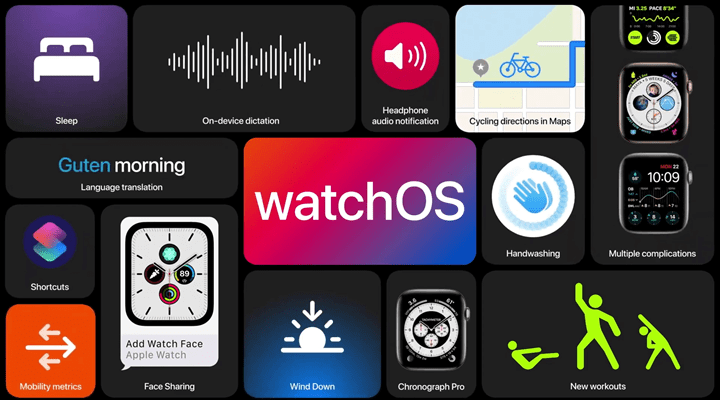
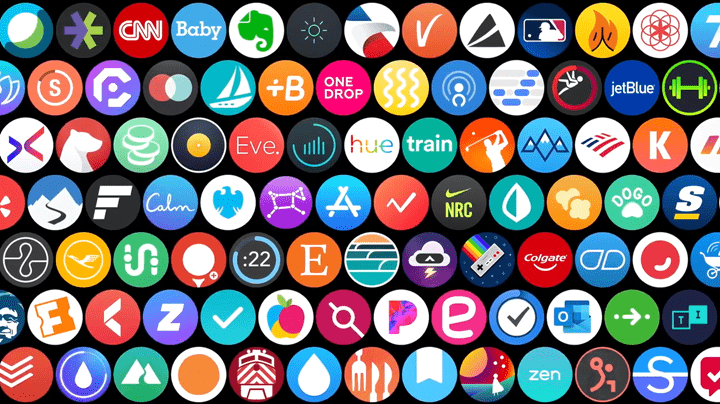
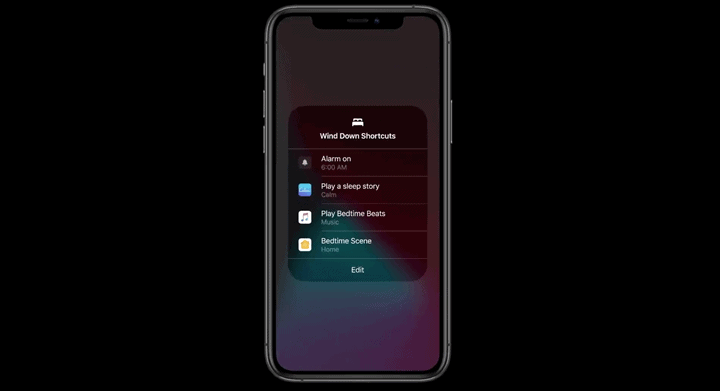
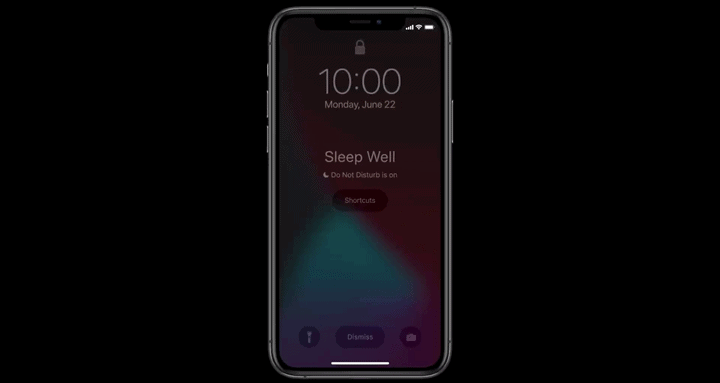
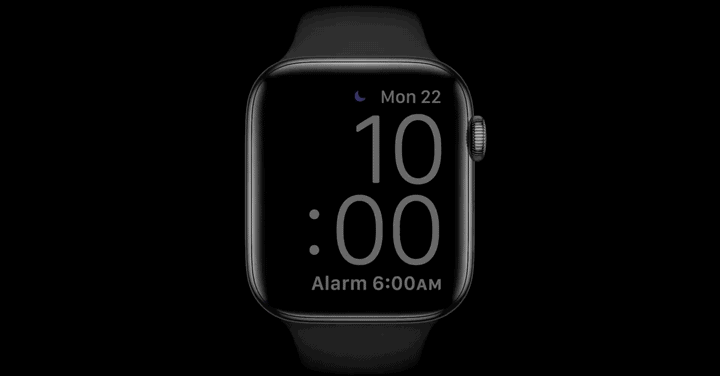
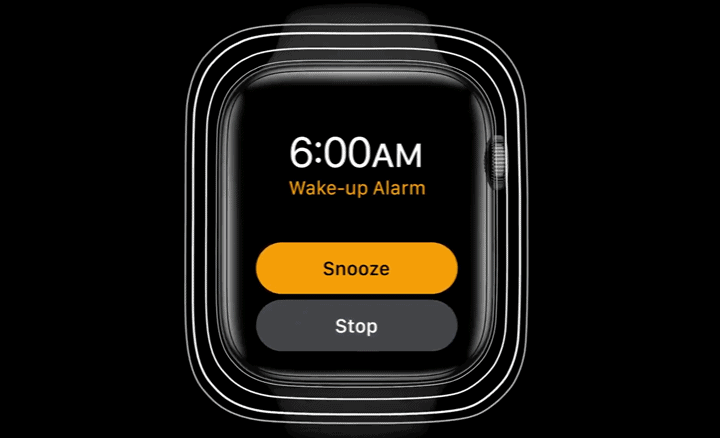

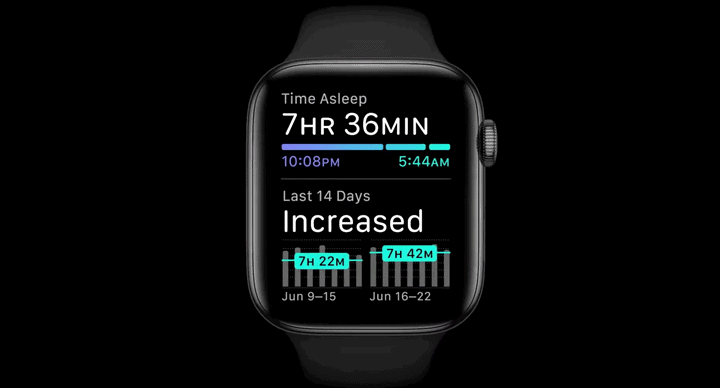
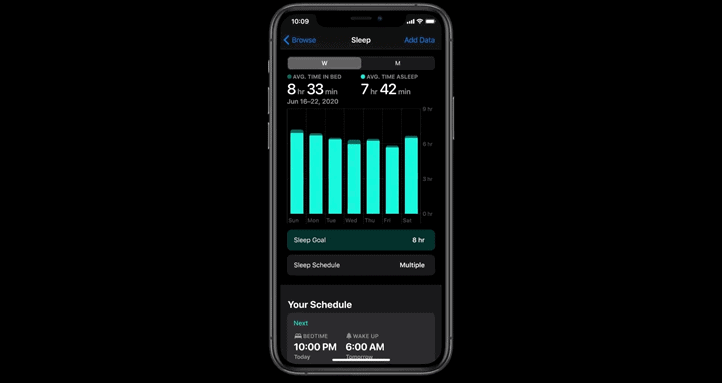
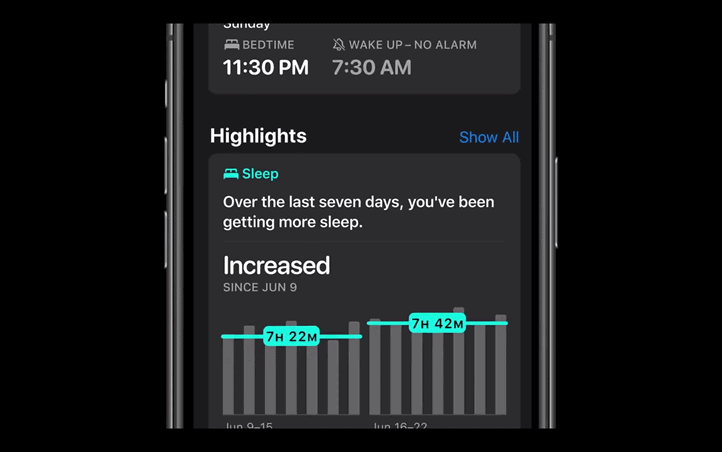
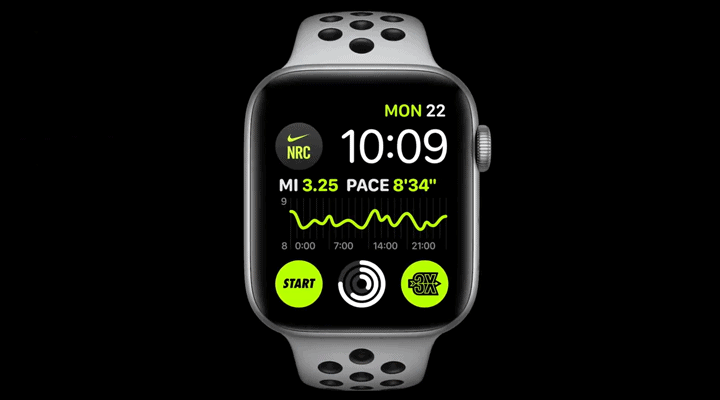
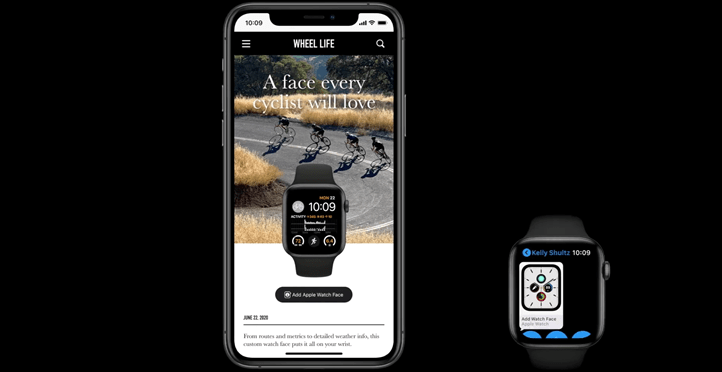
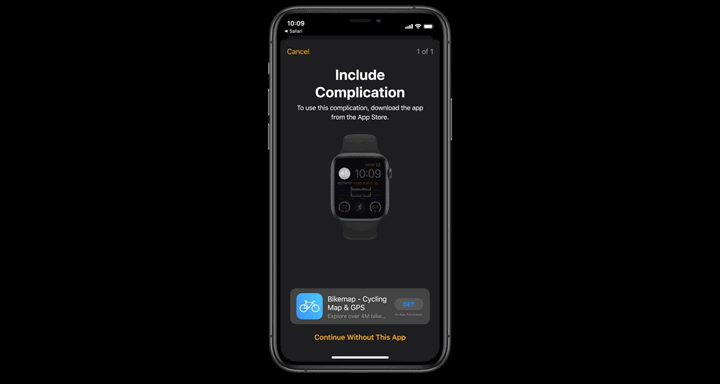
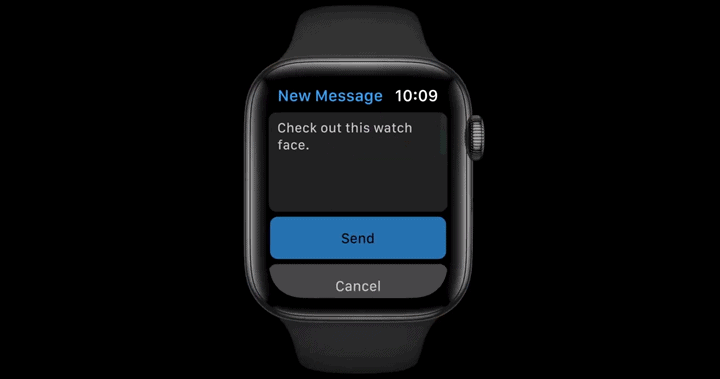
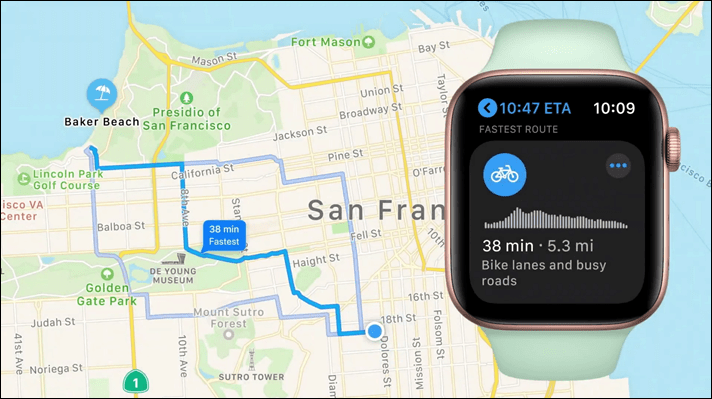
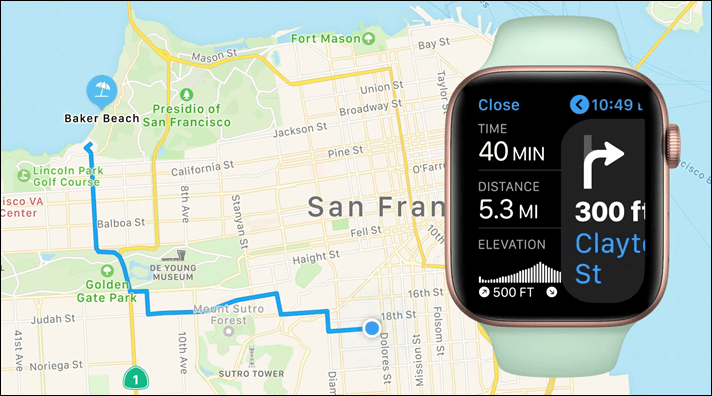
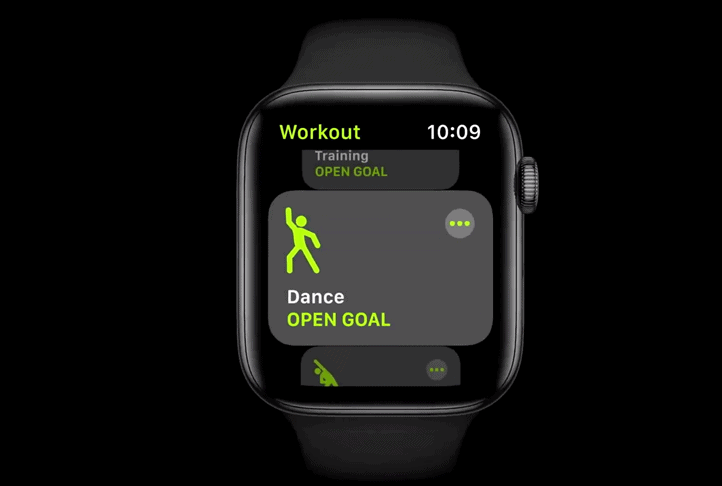
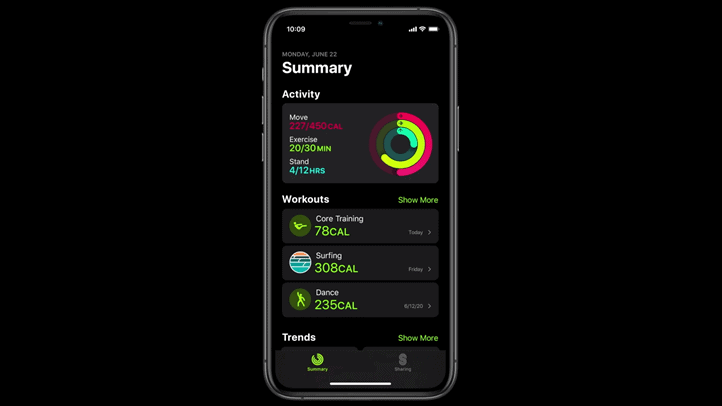
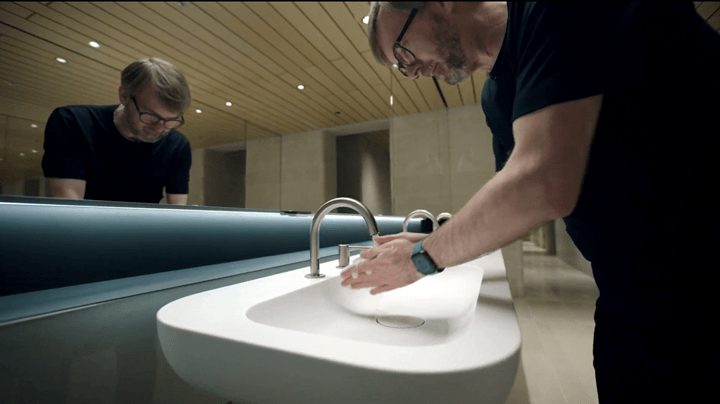
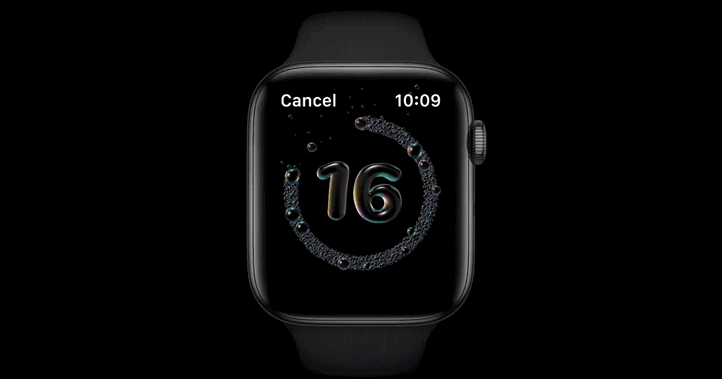
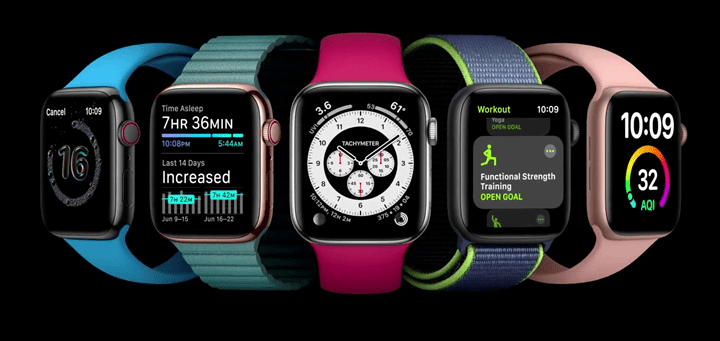





















Ray do you think “better hardware” might include a SpO2 sensor to track apnea in sleep?
Hard to say. That’s the current focus by Garmin, Fitbit, and others (directly or indirectly). Apple focused on ECG instead. But it certainly seems Apple plans to venture further in the health/medical realm.
It’s been rumored that the existing hardware can do spo2. Also rumored that the new os will add this functionality. link to 9to5mac.com
New workout types Dance, Core and Functional Strength? My Apple Watch 3 already has those!
Will be watching closely to see whether it is worth upgrading my hardware as so far these new software features alone haven’t convinced me
Odd, correct. Though, they made a big deal of those and an entire segment of being specific to watchOS 7, so we’ll have to see what’s unique/different about them.
I assume these exercises are no longer based on an ‘outdoor walk’ and have their own specific profile and algorithms – after all Apple made a song and dance about the dance profile!
I love everything about the apple watch except for the battery life. When my instinct is down to 2 bars I just have to remember to charge it at some point in the next 1-2 days depending on activity level. I feel like if I had 24 hours total I’d go for hours at a time with the apple watch dead if I weren’t always near a charger.
A hand washing timer – sounds like they are digging for fresh ideas. Basic sanitary tasks, what about a toilet timer to avoid piles :p
You laugh but the bathroom is key to health and therefore connected health. We already have connected scales and toothbrushes there but I think it’s just the beginning. Any tech company that’s serious about heath tech must be researching how to tap into what you do in a bathroom. And that includes the toilet. It’s all in the world, “sanitary” isn’t it? Obviously lots of effort must go into how to communicate about it as well…
With the focus on cycling today, I wish they had added things like auto pause in the Cycling Fitness app (they have it for Running – how hard can it be to also apply to Cycling activity) and native ability to add things like power meters. I guess the added features for cycling in Maps are more commuter focused.
Hopefully if they improve the battery in AW Series 6, they’ll go back to the performance in the AW Series 4 regarding HR accuracy, which was good in my experience.
I also hope that the Health app will be smart enough to avoid double counting workouts from the AW and, for example, imported workouts from Garmin devices that are automatically synced.
Ray – Any thoughts on whether these times (and others) will be cleaned up as other parts of what’s coming in WatchOS 7?
Thanks for getting this post up so quickly. Was very interested in your take on the presentation today.
I’ve been surprised at how hands-off Apple has been on the ‘fitness/sport’ side of Apple Watch in the last two years. They’ve basically done nothing since Apple Watch Series 3 (where they made huge leaps). Again, tons on the health/medical side, and lots on overall polish. But going from having marathon runners on stage back a few years ago at launch, to the entirety of yesterday’s ‘sport’ presentation being a (literal) song and dance on a few new-but-not-new sport profiles is surprisng.
I can however understand them not wanting to focus/care about doubling from 3rd party devices. That’s a tricky problem to solve when you don’t control the data inputs. For something like sleep it’s actually easier, because you can assume you can’t sleep twice at the same time. But for workouts its messier to determine which data point is correct and how exactly to deconflict.
Still, as Apple was super clear about – this isn’t the end of watchOS 7 features. I know I said it in the post, but the *way* they started and ended the entire Apple Watch section with the specific wording was very much a ‘Yo, we aren’t done yet – hold tight!’.
So we’ll have to see…
Pretty sure all changes to the healthket api will be walked about at WWDC:
link to developer.apple.com
Yes, more features may be coming and probably are, but very unlikely will they be features that involve 3rd parties
I get 2 days of battery life out of my AW5. My wife gets 2 days out of her AW4.
Sleep tracking does not need more battery life than that to be effective.
I could get 2 days out of the AW4, but never anywhere close to that from the AW5 with normal usage (usually died around the 24hr marker).
If usage died around the 24 hr mark, at least you could charge it while you sleep. Now, with sleep metrics, you’d need to wear it to bed. When the heck are you supposed to charge it EVERY SINGLE DAY if you’re wearing it all the time? (My showers aren’t THAT long.)
Now if they came out with a charging pod like the Whoop band has that’d be a different story. If one has a desk job I guess you could charge it at work but not everyone does.
It is interesting how this devices evolves over the years… For sleep tracking I can imagine they will put the watch into deep sleep as well (pun intended) so it will only track the requires metrics without affecting the battery life too much. I think they’ve mentioned that the screen will only go on after a tap.
One upside of the AW4 and AW5 is the slim profile… Putting a bigger battery in might ruin that experience.
Nothing mentioned yet about HR broadcasting right? That would be a major feature for Garmin Edge, Wahoo etc. users.
Nothing on HR re-broadcasting. 🙁
“Series 2 (2016) units are outta luck here”
To be fair, your Fenix 5 review wasn’t until 03/2017 and when was the last meaningful update for those watches? Garmin don’t usually even update simple cosmetic aspects which the hardware could support beyond the first year or so, so I have to applaud Apple here for supporting these for so long.
I realise that the Edge devices get a better lifespan sometimes, but it would certainly be nice to see Garmin consolidate their OS offering like this and just enable what the hardware can support.
I agree.
I do think it basically starts to more concretely draw the line in the sand on how far back Apple will support Apple Watches from a software update standpoint. They kinda drew that line last year, but it wasn’t super clear since it was the first time the line had been drawn.
It’s also semi-notable because I’ve oft seen the argument ‘All Apple Watches get all updates forever’, which, well, clearly isn’t true.
I don’t think it’s an unreasonable line right now. The technology in these watches is improving very quickly, and a 4 year old devince definitely isn’t as capable as a 2 year old watch. What I have noticed is that iPhones (dodgy slowdown tactics being claimed as battery fixes aside) are being supported for longer than they used to.
I have to hand it to Polar here as well, their long term support is really good. They did release the Vantage over a year before it was ready, but it’s aging well.
I’m not really having a moan though, my post was mostly to highlight to any Garmin folk reading comments that people do care about this stuff, even when they are the market leader. Between this on the watches and Micro-USB on the Cycle stuff that has me constantly looking at alternatives and hoping, and it would be so easy for them to stop me even looking elsewhere!
Yup, I agree. I just want Garmin to draw that line. Whatever it is, draw it, make it public, and stick with it.
I think it’d go a long way. It’s very clear from looking at the comments on the Edge 130/1030 Plus posts that the current mentality around Garmin devices and updates is: “Garmin doesn’t update their older devices as soon as a newer one is out.”
Now, as is easy to demonstrate- that’s incorrect. Really incorrect. But it’s also not incorrect once you get beyond about 18 months or so in most cases. I think for most people the line in the sand is mentally closer to 2-3 years than 12-18 months.
I would say they also need to be more clear on their product differentiation. For example how many watches are there? They did well with the 935 getting the features of the fenix 5. But how about the fenix 6 and 945?
As to garmin not updating old devices when new stuff comes out. Yes, that is incorrect, but isn’t really in that the updates that do come out are more bug fixes more then new functionality. When Apple talks about this new functionality coming to their watch its not just the new watch that gets it, the older devices get it too. When Garmin releases new functionality?
When has garmin backported functionality to an old device when something new comes out? I’m not counting support for new devices garmin makes as thats really just so they can sell more, I’m talking about functionality that doesn’t involve another purchase from garmin. Yes the edge 1030 got lots of updates to give it the features from the 830/530 but garmin was also still selling it as their high end head unit so they kind of had to.
“When has garmin backported functionality to an old device when something new comes out?”
It depends. If we look at the Feinx 5 Plus, it’s received a number of feature updates – even notable ones. For someone purchasing a Fenix 5 Plus, they probably value the gear shifting they got after the Fenix 6 came out, or the added ClimbPro for cycling. I’m pretty sure most would argue that in terms of ‘feature updates’ those are certainly larger than Apple re-adding dance support.
Of course, it’s hard to give too much credit on sleep here. Let’s remember, every other wearable has been tracking sleep since, what, 2015 or prior?
That said – I totally agree there’s far too many models in the market right now from a consumer understanding standpoint. On the flip-side, from a purely business side, Garmin is selling more Garmin wearables than ever before. They’re (business-wise) doing better than ever before in Fitness/Outdoors. Like, printing money better.
Whether or not they’d do ‘Better Plus’ with a more simplified lineup is I suppose the real question.
* link to www8.garmin.com
To me, the question isn’t if they’d do better. Would they genuinely do worse if they had premium metal designer watch, large plastic, small plastic, touchscreen as options instead of the frankly bizare selection they have now where they blatantly untick the multisport mode in code because you bought a running watch? We all know that multisport is not hardware limited, just like we all know that pulseOx is. I have a F5 with metal band, F5+ with metal band and 935 (among others ;o) ). I don’t have these because Garmin feature locked them, I have them because I wanted a light watch (935) and a dress watch (F5) so I paid them some more money for that. I then wanted music which needed bluetooth and storage so I bought the F5+. I also have a vivoSomething for casual wear when I don’t want a full watch and several Edge devices linked to cycle use-cases. I didn’t buy the Edge 130 because it was cheap or because it lacked mapping, I bought it because a tiny computer with great screen suits commuting to the office.
None of what we’re talking about would materially cost Garmin money – in fact it would save money through consolidation and testing. We all get that a 1030 is more premium and costs more to produce. We all get that a 1030 is cheaper than a 1030+ because of the slower chip. What we don’t get is why Garmin charge a 1030 user for mapping based on OSM maps they didn’t produce while giving it to a 1030+ owner (as a recent example).
Someone in marketing at Garmin is trying a bit too hard to be business oriented, and it’s costing them kudos for no reason. Apple get this and that produces insane loyalty, I think Wahoo get this too. Garmin has an MBA working out how to squeeze profit at all costs, and when competition appears (and it will eventually) they will suffer!
I agree with everything you wrote above. Everything.
And then there’s the last line:
“Garmin has an MBA working out how to squeeze profit at all costs, and when competition appears (and it will eventually) they will suffer!”
The problem here is that’s what people have been saying for years, and competition happened and ultimately, Garmin makes more money then ever before. Apple came along and everyone said Garmin would die. They didn’t, they actually got stronger. Wahoo came along too, and everyone said things were a ‘Garmin killer’. They weren’t. Garmin simply sold even more GPS cycling units than before. Wahoo’s market share is (on a good day in the right region) barely double-digits. And I think it’s slid backwards since ROAM. And we haven’t even begun to see the pain Garmin will undoubtedly apply to Wahoo once they can figure out how to get their house in order with Tacx.
Aside from consumer frustration, it’s hard to explain to Garmin why they should try hard to not piss off consumers when from a pure business standpoint year after year (so not short term), they just get stronger.
Again – I agree with everything you’re saying. I’ve been arguing for it in every post (especially things like maps. I’m just not sure how else to explain it.
Neither Wahoo or Apple actually compete with Garmin. As I’ve often said, Wahoo doesn’t understand what maps are for, and until they do, they’re no competition for navigation on an Edge. As for Apple, with their limited support for sensors, they don’t match up with a Fenix, either.
Last October we were in London, and one day I set up a “Sherlock” route to walk. First stop was Speedy’s Cafe on Gower St. (anyone who has seen the BBC series will know why), and then on to Baker St. and then back to our hotel near Picadilly. I had been using my iPhone/AW5 extensively to route on this trip, and everything had been working fantastically well. So I was on my way to Gower St., and suddenly whoever Verizon uses for international roaming (Orange? began with an O) decided they didn’t want to give me cell service right then. Routing on the iPhone/AW5 simply stopped, and the map stopped updating. But my Fenix 5+ (I was using it to record but not to navigate) worked just fine (I had spent the $20 to buy and install UK maps before we had left the US) and that and what I remembered of the route kept me on track until cell service resumed about 10 minutes later.
There are reasons that I have both an AW5 and a Fenix 5+ and use each for different things, and there’s are reasons that I have an Edge 830 and not an ELEMNT and that I don’t plop my iPhone on my handlebars. Other people have different needs, of course, but neither an ELEMNT (even the Roam) or an AW meet the specific needs I have for an Edge and a Fenix. No matter how annoying Garmin software/firmware can be at times, the good far outweighs the bad for me. Yes, they should be giving maps away for free for other regions, but you can always just install free maps that you find elsewhere if you have to. Can’t do that on a AW (or a Wahoo?).
“Neither Wahoo or Apple actually compete with Garmin. As I’ve often said, Wahoo doesn’t understand what maps are for, and until they do, they’re no competition for navigation on an Edge.”
For your use an Edge may be the only viable choice, but not everyone uses their Edge or Element primarily for navigation. I’ve see lots of people around me switch from a Garmin to a Wahoo head unit over the past few years, and be happy with it. They definitely do compete.
I think you are agreeing with the post above. You are saying that some people use their cycling computers primarily for metric tracking, trainer control, etc. The poster is saying that Garmin is superior to Wahoo in navigation.
I find both of these to be true. I have an Edge 1030, I have buddies with the ROAM, and I got my wife a Kickr SNAP and Elemnt Bolt, so its not solely a Garmin platform preference for me. The Wahoo products are simpler to operate and easier to read information at a glance (except the maps), but the Garmin is more feature rich (ANT+ lights for example) and the mapping is less cellphone and third party map dependent.
The fenix 5 plus always had climb pro it seems (6.00 improved how it worked with route recalculations) and not sure what you mean by gear shifting other then adding support for 12 speed bikes. Doesn’t look like much got added after release. Bug fixes, sure, new functionality? I don’t see anything backported
Sure apple adding dance support isn’t much but the series 3 watch came out in 2017 and got all the software changes that came with the series 4 watch the year after and the series 5 watch the year after and will be getting the new OS thats coming this year. When the 945 came out what was backported to the 935?
Is it fair to say that garmin seems to be doing well with how they are going so they don’t need to backport features to older devices when a replacement comes up? Sure. But I think it needs to be recognized that that’s what they do.
link to gpsinformation.net
“I think you are agreeing with the post above. You are saying that some people use their cycling computers primarily for metric tracking, trainer control, etc. The poster is saying that Garmin is superior to Wahoo in navigation.”
Not quite. My point was that he’s generalising “Garmin is better in navigation” to “They don’t compete with Garmin” (in general), which is false.
The Fenix 5 Plus got the ClimbPro from the Edge 530/830 variants additives, specifically around cycling.
12-speed is notable because of AXS becoming all 12-speed. I’d argue that’s a more meaningful change than the calorie burn algorithm for dance (which, is seems, is all we’re talking about here).
Look, I’m not saying Garmin s equal to Apple in this respect in terms of overall OS features, but in terms of sports/fitness stuff, Apple has really added almost nothing in S4/S5 timeframes.
That is a different climbpro then the one that shipped with the watch? link to dcrainmaker.com
They did not mention the utter most important metrics in Sleep after sleep time, which is heart rate and heart rate variability. Hope they will include this. Average heart rate and average heart rate variability are key metrics to understand recovery status.
Thought the Apple Watch measured heart rate once every 5 minutes only? Enabling per second heart rate and heart rate variability recording would make the poor battery life situation much worse.
Apple are still selling the AW3 on their website, which kinda makes them forced to support it!
Garmin is selling the Forerunner 645 on their website, yet it does not even receive updates that the Forerunner 245 receives.
On the flip-side, an Apple Watch requires you buy an iPhone. A Garmin watch doesn’t. Apple can effectively subsidize some aspects of the true profitability of the Apple Watch knowing that every person has to own an iPhone too (you can’t pair an Apple Watch to even an iPad, because it doesn’t have Apple Health).
Pretty sure it’s their app store that is the real subsidy provider with how it brings in $50 billion a year which is over an order of magnitude more then Garmin as a whole
I was disappointed that they didn’t go more in-depth with sleep stages etc but perhaps battery limitations mean this won’t even be something we see added to the AW 6?
while I don’t think Apple’s versions will make the same mistakes some watches somehow make (not recognising getting up and moving in the middle of the night as being awake!) I do think the lack of longevity of the AW will really hamper Apple’s progress in this area – but who knows?
Which watch would you recommend for sleep tracking as well as having a display for showing half-decent data during other sports (cycling / swimming/ running) at under £250? So far I’ve shortlisted the versa 2, forerunner 245 and Polar Vantage M, the latter having the advantage of being able to track cycling power.
It’s tough. Apple is in the unique position of having both more data than anyone else on sleep, and yet having far less data than everyone else on sleep. Remember, your Apple Watch health metric data doesn’t actually go to Apple, it stays on your iPhone, and in theory Apple has no access to it.
So while they have millions more wrists, they have exactly zero data (save their own employees) compared to Garmin/Fitbit/Samsung/etc…
Sleep stages requires much more advanced methods. Very unreliable using publicly available technology.
Remember that Apple bought beddit a few years ago. They killed it, but maybe some of it still survives
The only sleep session is link to developer.apple.com
So doubt they will give any details out. When does apple ever do that?
I’m just wondering if they’ll put in a setting option to allow GPS and HR to lock BEFORE you begin your workout, rather than just giving you an arbitrary 3-2-1 countdown.
It looks like Health Kit is being updated to share ECG data with third party apps. I see this as a potential to measure actual HRV directly from ECG off the Apple Watch. Chest straps do the same thing, but it would be convenient if I could take an ECG measurement upon waking and pull out HRV data from the actual ECG recorded from the Apple Watch. I don’t know if this much data is shared with third party apps (such as the R to R intervals) but it would really nice to have a much more accurate look at HRV from ECG than to pull it from optical. It’s strange too that Apple’s own native HRV readings are optical based rather than ECG based when you trigger a reading. Seems like untapped potential.
Hi, with regards the ‘new’ activities (dance, functional training, core etc), on the previous OS the calorie burn for these was a generic one based on time and averages (unless supported by a heart rate or other monitor), however in this new OS they have calibrated the accelerometer to recognise the activity and record your movements more accurately and award a more realistic calorie burn. I hope that makes sense! Cheers, Mike
Cycling power still missing…what’s so difficult to add that?!?
What about having the step counter as a complication without needing to use a 3rd party app? The watch tracks steps very accurately but no way of seeing that on your watch face. Seems so basic, every other device has this ability out of the box.